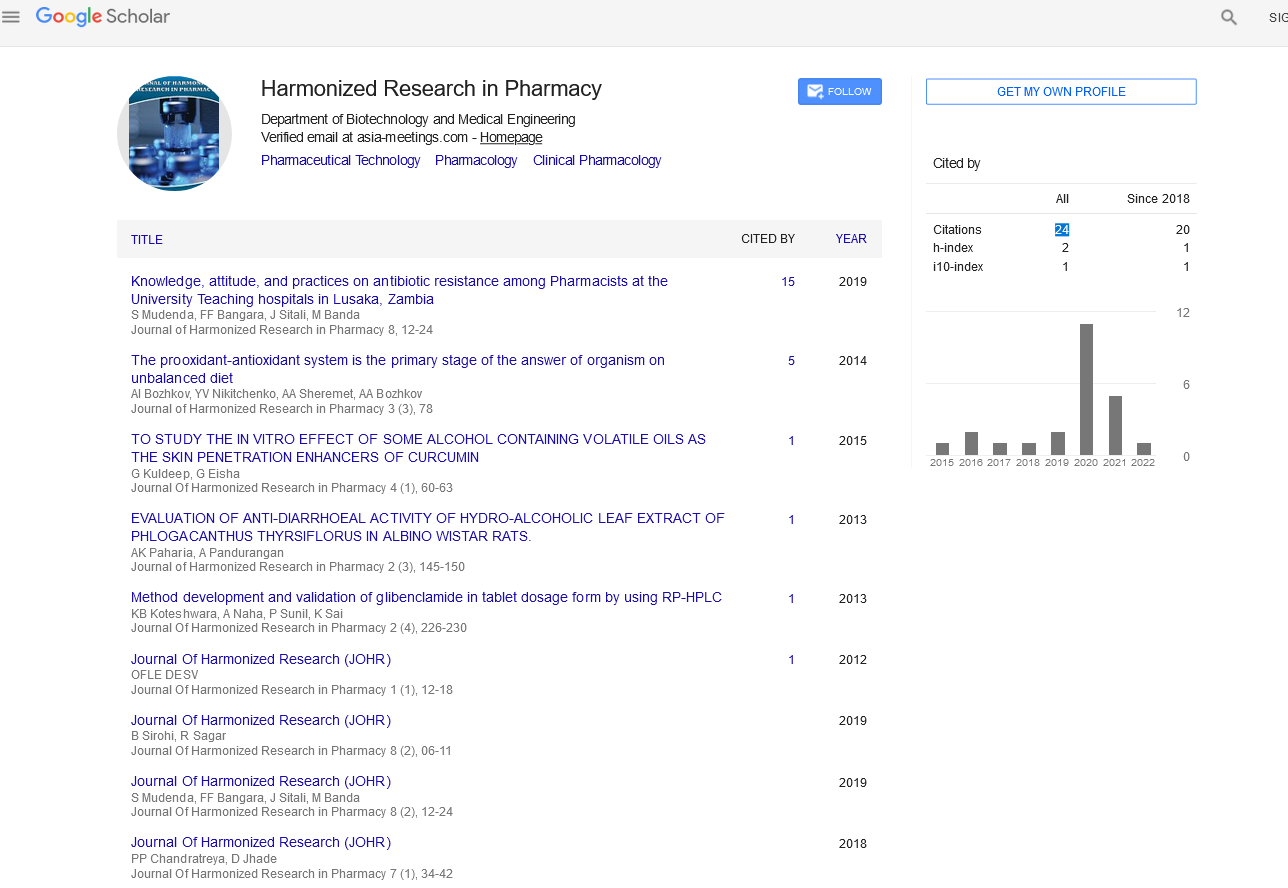EVALUATION OF ANTIPYRETIC ACTIVITY OF VARIOUS EXTRACTS OF LEAVES OF MENTHA ARVENSIS IN RAT
Abstract
Author(s): Raghvendra Mishra, D.N.Jhade, Sunil Shah, Chandra Kishor Tyagi, Mithun Kumar Verma
Mentha arvensis Linn. is described as a antipyretic in Ayurveda, the Indian system of Medicine. There is no reaserch reports in themodern literature regarding its usefulness as a antipyretic agent. T he present studywas carried out to evaluate the antipyretic activity of extracts of leaves of Mentha arvensis Linn. Brewer’syeastinduced pyrexia in male Albino rats. Materials and Methods: Different leaf extracts of Mentha arvensis Linn were subjected to preliminary phytochemical analysis and evaluated for their antipyretic potential employing yeast induced pyrexia in Albino rats. Results: The ethanolic, chloroform and petroleum ether leaf extract exhibited maximum antipyretic activity (P<0.001) at doses of 250 and 500 mg/kg-1b.w. p.o. in a dose dependent manner and the antipyretic activity was comparable to that of reference standard paracetamol and aqueous extract did not showed any significant antipyretic activity. Phytochemical analysis revealed presence of flavonoid, triterpenoids, sterols and alkaloids, which have been known for their antipyretic activities. Conclusion: The Ethanolic extract of Mentha arvensis Linn of leaves. Possessed antipyretic activity and this may be due to the presence of flavonoids and triterpenoids, because as per literature they showed good antipyretic activity. However, further molecular level word is required to determine the exact mechanism involved in antipyretic activity of Mentha arvensis Linn. leaves. Key words: Mentha arvensis Linn, Brewer’syeast, antipyretic, phytochemical analysis, paracetamol.

Google Scholar citation report
Citations : 147
Journal of Harmonized Research in Pharmacy received 147 citations as per google scholar report









